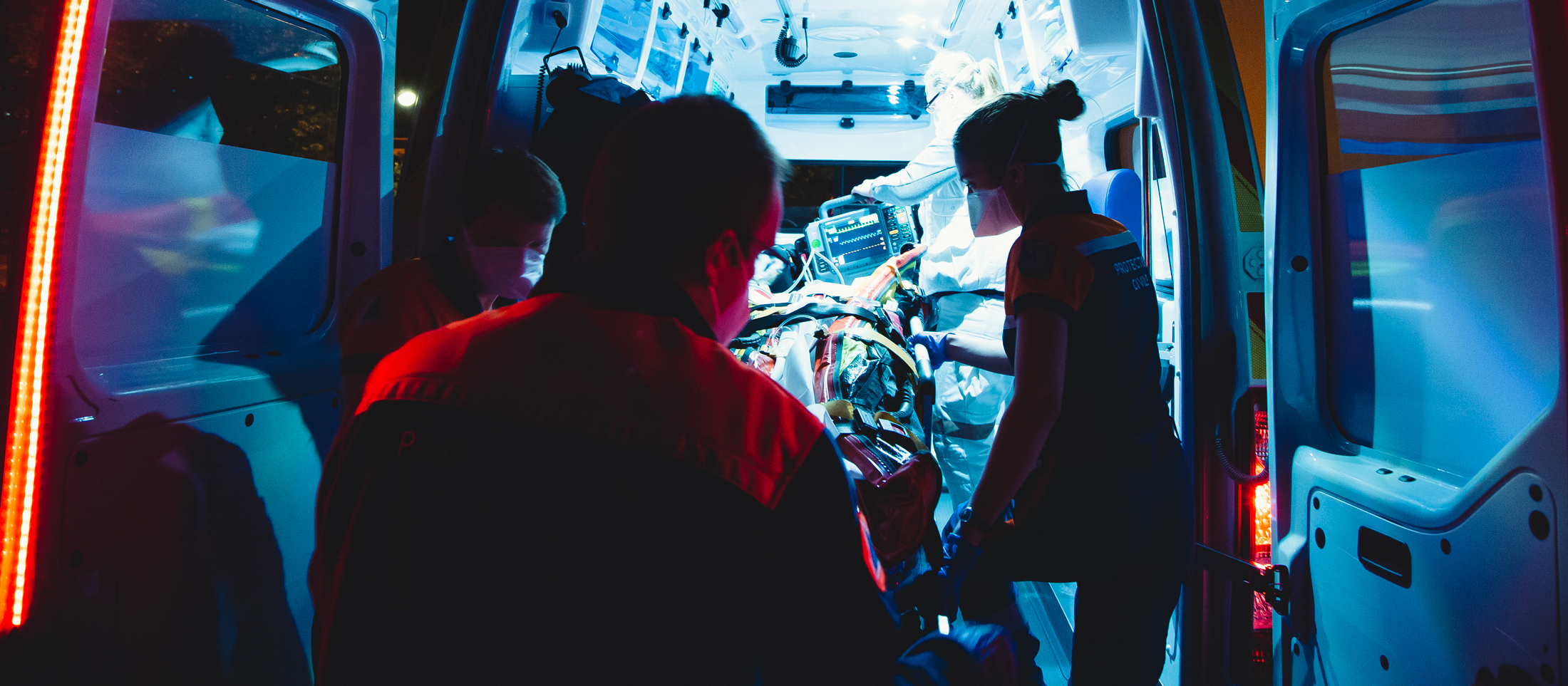Cardiac arrest accounts for an estimated 7-9 million deaths annually, with survival at only 1 out of 10 today.
Today's CPR only replaces 35% of blood flow, which is not enough to resuscitate most patients; and does not buy enough time to bridge patients to advanced treatments.
Cardiac arrest is a major health problem accounting for an estimated 15-20% of all deaths with a survival at only 1 out of 10 when treated today. In the US the societal burden of sudden cardiac arrest is 40-50% of all life years lost from all of cardiac diseases. Current standard of care (CPR & AEDs) does not reach high enough blood pressure to successfully resuscitate most patients, or provide enough time to successfully bridge patients to more advanced treatments.
Accidents is the leading cause of death under the age of 45 and critical bleedings accounts for a third of these deaths. There is similarly an unmet need for improved tools to help treat these patients.
20%
Cardiac arrest is a major health problem accounting for an estimated 15-20% of all deaths.
50%
In the United States 40-50% of all lost life years from heart disease is due to cardiac arrest. Cardiac arrest is leading cause of lost life years within heart diseases.
35%
Today's CPR only replaces 35% of blood flow, which is not enough to resuscitate most patients; and does not buy enough time to bridge patients to advanced treatments.


Protecting the brain
The brain is subject to decreased blood flow during a cardiac arrest, preventing time for advanced definitive treatments and leading to brain damage. Aortic occlusion during cardiac arrest increases the cerebral perfusion pressure with 200% as compared to standard treatment in the pig model.
Learn more
September 2002
Effect of intra-aortic occlusion balloon in external thoracic compressions during CPR in pigs
Protecting the heart
Nine studies of aortic occlusion in models of cardiac arrest have shown substantial increases in both coronary artery flow and coronary perfusion pressure. Coronary perfusion pressure is principal in achieving survival return of spontaneous circulation (ROSC). The higher the CPP, the higher the likelihood of achieving ROSC.
Learn more
March 2021
Randomized blinded trial of automated REBOA during CPR in a porcine model of cardiac arrest
May 2017
The role of resuscitative endovascular balloon occlusion of the aorta (REBOA) as an adjunct to ACLS in non-traumatic cardiac arrest

This project has received funding from the European Union's Horizon 2020 research and innovation program under grant agreement No 811866
DK OFFICE
Antonigade 11, 2nd floor,
1106, Copenhagen
UK OFFICE
45 Albemarle Street, 3rd floor,
Mayfair, W1S 4JL, London
Saving hearts and minds